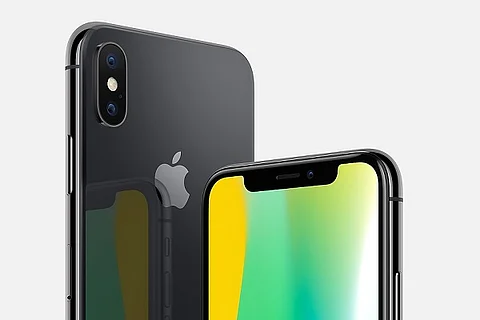

Apple’s latest flagship iPhone X looks absolutely stunning and is packed with top-notch features. And while it is a phone everyone would love to own, the $999 (Nearly a lakh rupees in India) price tag it comes with makes it affordable to very few people.
iPhone X is the most expensive smartphone from Apple’s stable followed by iPhone 8 Plus, which costs $50 less.
But does it really cost that much to make the iPhone X? Teardown engineers at research and analysis firm IHS Markit dissected the new Apple iPhone X 64GB version to find out what the final bill of materials (BOM) was.
“While the iPhone X represents Apple’s biggest step forward in design since the iPhone’s debut in 2007, its underlying architecture is analogous to the iPhone 8 Plus. Both models share platform-common components, but the X’s superior screen and TrueDepth sensing set the phone apart and contribute to its higher cost,” said Andrew Rassweiler, senior director of cost benchmarking services at IHS Markit.
So how much does it cost to make iPhone X 64GB version? Here is a break down
Teardown engineers have found that the model A1865 version of the smartphone (64GB) carries a bill of materials (BOM) of $370.25. To bring in some context, Samsung’s Galaxy S8 64GB version has a BOM of $302 and retails at around $720.
Apple’s retail strategy
With the iPhone X, Apple seems to have set an aspirational starting price that suggests its flagship is intended for an even more premium class of smartphones.
Based on the BOM cost and retail pricing, IHS Markit believes that Apple is maintaining its typical hardware margins for the iPhone X. That gross margin may increase over time as manufacturing yields improve.
TrueDepth sensing technology: Lots of components, many suppliers
The standout feature on the iPhone X is Face ID, a facial recognition system replacing Touch ID that was used till now too unlock the phone and authenticate payments.
Face ID is enabled by the TrueDepth sensing system, which is housed in the black notch at the top of the phone. An infrared (IR) camera projects and analyzes more than 30,000 invisible dots to create a precise depth map of a human face, and it employs machine learning to adapt to physical changes in appearance.
It’s a complex assembly that uses components from many suppliers.

The teardown of the iPhone X revealed that its IR camera is supplied by Sony or Foxconn while the silicon is provided by ST Microelectronics.
The flood illuminator is an IR emitter from Texas Instruments that’s assembled on top of an application-specific integrated circuit (ASIC) and single-photon avalanche diode (SPAD) detector from ST Microelectronics.
Finisar and Philips manufacture the dot projector.
When put together, the BOM for the TrueDepth Sensor cluster costs a total of $16.70, HIS Markit estimates.
The edge-to-edge AMOLED display
For the iPhone X, Apple uses a 5.85-inch 19.5:9 aspect ratio AMOLED panel with a Force Touch sensor beneath the polarizer film. The panel is supplied by Samsung Display, who will supply around 67 million flexible AMOLED units to Apple in 2017 built to the company’s unique specifications.
IHS Markit estimates the cost of the display module, which includes the cover glass, AMOLED panel and Force Touch sensor, at $110.
Body and camera
The iPhone X’s stainless steel enclosure costs $61.
The iPhone X sports a dual-lens rear camera of 12 megapixels each. Both rear cameras have optical image stabilisation and fast lenses for outstanding photos and videos even in low light. The secondary camera on iPhone X is a 7MP one.
The entire camera module costs $35.

Processor and Chips:
The apps processor in the iPhone X is an A11 Bionic, 64-Bit 6-Core CPU, 3-Core GPU 10nm processor. This processor is made by Apple itself and cost the company $27.50 to make.
Then there is the RF Chipset which includes the Baseband IC, RF Transceiver and Power Management is supplied to Apple by Qualcomm. IHS Markit estimates this at $18.
The power management chip that enables wireless charging is supplied by Broadcom and the chips involved in power management of the apps processor is procured from Dialog Semiconductor and ST Microelectronics. This in total costs Apple $14.45, as per IHS Markit eastimates.
The memory component, supplied by Toshiba Semiconductor and SK Hynix Inc, costs Apple $33.45.
The other components such as the battery pack, filters, transmit modules, user interface chips, sensors, and WLAN module together come up to $42.35, estimates IHS Markit.
Finally, IHS estimates the box contents such as the charger, headset, and headphone jack adapter, USB to Apple lighting cable at $12.
In a previous teardown done by IHS for iPhone 8, it found the bill of materials cost to be $255.16 for a device that has a starting price of $700.
Now, while the above costs are all estimates put forth by teardown engineers at IHS Markit, Apple’s CEO Time Cook is said to have dismissed them saying that he hasn’t seen one that was anywhere close to being accurate.
Commenting further on the premium price of the iPhone X, he had said on a Good Morning America show on ABC News in September, that it is actually a value-for-money price for the technology that consumers are getting.